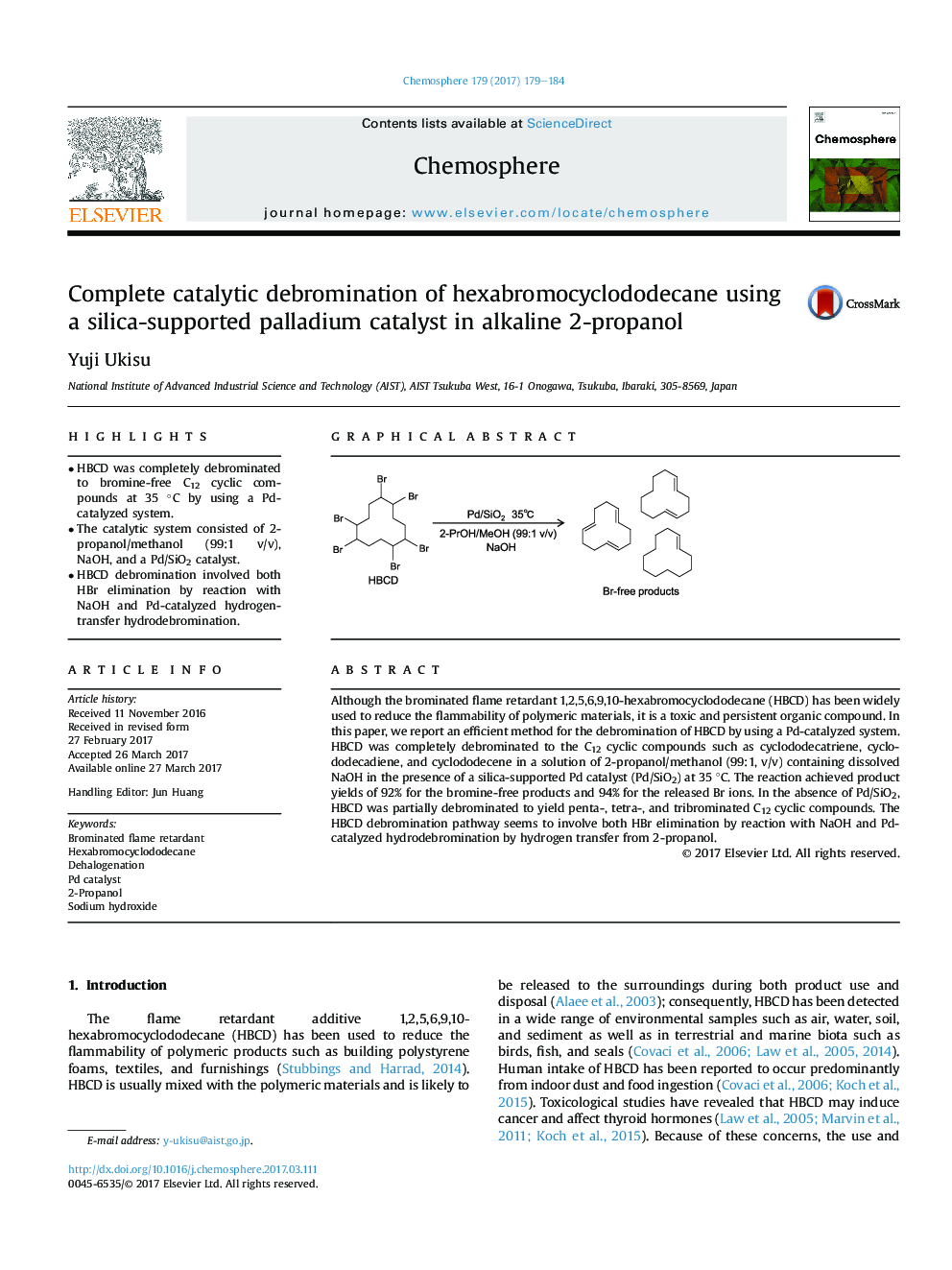| کد مقاله | کد نشریه | سال انتشار | مقاله انگلیسی | نسخه تمام متن |
|---|---|---|---|---|
| 5746562 | 1618792 | 2017 | 6 صفحه PDF | دانلود رایگان |

- HBCD was completely debrominated to bromine-free C12 cyclic compounds at 35 °C by using a Pd-catalyzed system.
- The catalytic system consisted of 2-propanol/methanol (99:1 v/v), NaOH, and a Pd/SiO2 catalyst.
- HBCD debromination involved both HBr elimination by reaction with NaOH and Pd-catalyzed hydrogen-transfer hydrodebromination.
Although the brominated flame retardant 1,2,5,6,9,10-hexabromocyclododecane (HBCD) has been widely used to reduce the flammability of polymeric materials, it is a toxic and persistent organic compound. In this paper, we report an efficient method for the debromination of HBCD by using a Pd-catalyzed system. HBCD was completely debrominated to the C12 cyclic compounds such as cyclododecatriene, cyclododecadiene, and cyclododecene in a solution of 2-propanol/methanol (99:1, v/v) containing dissolved NaOH in the presence of a silica-supported Pd catalyst (Pd/SiO2) at 35 °C. The reaction achieved product yields of 92% for the bromine-free products and 94% for the released Br ions. In the absence of Pd/SiO2, HBCD was partially debrominated to yield penta-, tetra-, and tribrominated C12 cyclic compounds. The HBCD debromination pathway seems to involve both HBr elimination by reaction with NaOH and Pd-catalyzed hydrodebromination by hydrogen transfer from 2-propanol.
115
Journal: Chemosphere - Volume 179, July 2017, Pages 179-184